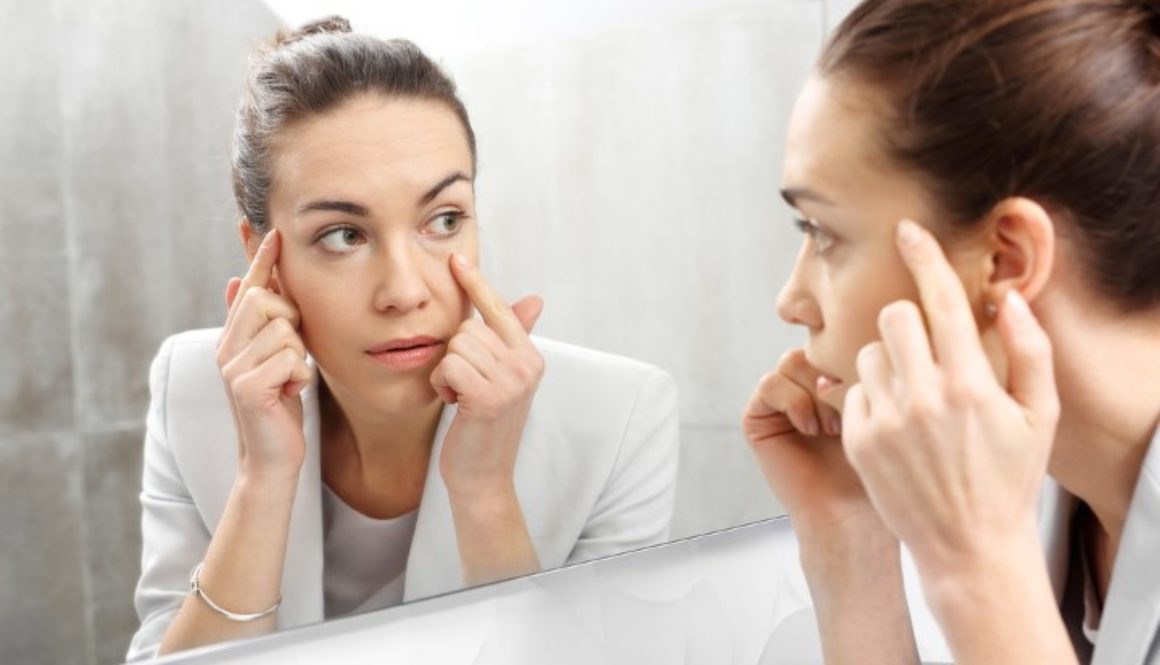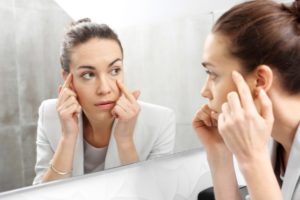Ask Dr. LeRoy: I Get Plenty of Sleep but My Eyes Still Look Tired. What Can I Do?
When people hear the term “facial rejuvenation,” they tend to think of procedures that make patients look younger, but that isn’t all it encompasses. The category of facial rejuvenation also includes treatments that help people look more refreshed and well-rested. In fact, I often see patients who say that even when they get plenty of sleep, they always look tired. They want their appearance to reflect energy and positivity, so they’ve come to me for help, and I have a few tricks up my sleeve.
Lower eyelid surgery for “puffiness” or “bags” under the eyes
Sometimes puffiness under the eyes can be temporary, caused by fluid retention, allergies, or irritation. If yours is more of a permanent fixture, however, it’s most likely caused by a shifting of the natural fat pads under your eyes. It’s common for these fat pads to move forward or lower as we age, and this can lead to some unwanted volume and “bags under the eyes,” especially when the skin has become thinner and more lax with time.
The only way to achieve a long-term and effective relief from puffiness or bags under the eyes is with lower eyelid surgery, also called lower blepharoplasty. It’s actually a rather minimally invasive procedure (especially if you’re a candidate for my in-office Band Aid Lower Blepharoplasty). Through small incisions near or within the lower lash line, the excess fat is removed and, if necessary, excess skin is removed and the remaining skin is given a lift.
Upper eyelid surgery for drooping upper eyelids
When people feel that they have droopy eyelids, the problem is not always the eyelids themselves but the skin above them and below the eyebrows. Some people naturally have extra skin in this area, but developing excess sagging skin is also a common sign of aging, so it’s amplified even more for people with naturally “hooded” eyelids. Ultimately, this extra skin can droop over the upper eyelids and make the eyes look less open (and therefore less awake and less cheerful).
Similar to lower blepharoplasty, I often perform upper eyelid surgery with my in-office minimally invasive version called Band Aid Eyelid Surgery, which uses gentle numbing rather than general anesthesia for a much shorter recovery period. During the procedure, the excess sagging skin is removed and the eyelids are given a more rested, youthful look while still remaining natural.
Facial fillers and/or Band Aid Laser Skin Resurfacing for dark circles under the eyes
There are a few different potential causes for dark circles under the eyes. The problem that affects people of all ages is shadowing. If your facial structure involves deep-set eyes, a protruding brow, and/or hollows under your eyes, it can shadow the area under your eyes to look darkened. For many patients, the solution to this is using facial fillers (like Juvéderm®, Restylane®, and others) to fill in the hollow area under the eyes. It’s a quick and simple procedure for an experienced board-certified plastic surgeon, and the results can last anywhere from 6 months to a year depending on which filler is used.
In other patients, dark circles under the eyes can be caused by thinning skin – a common part of the aging process. In these cases, my Band Aid Laser Skin Resurfacing uses the advanced DOT™ fractionated laser to stimulate collagen production and restore the skin to a thicker, firmer, brighter look.
No one wants to hear, “You look so tired,” or “Are you sick?” especially when they’re not. Certain natural features and signs of aging have a way of making anyone look sleep-deprived, but I’m happy to help you get back to the confident and well-rested appearance you once had. Remember, every patient is unique, so an in-person consultation is always needed to find out the best cosmetic options for your needs. To take that first step, schedule a plastic surgery or nonsurgical consultation with me, Dr. John L. LeRoy. Be sure to follow me on Facebook, Twitter, and Google+, too, for more helpful cosmetic surgery tips.


